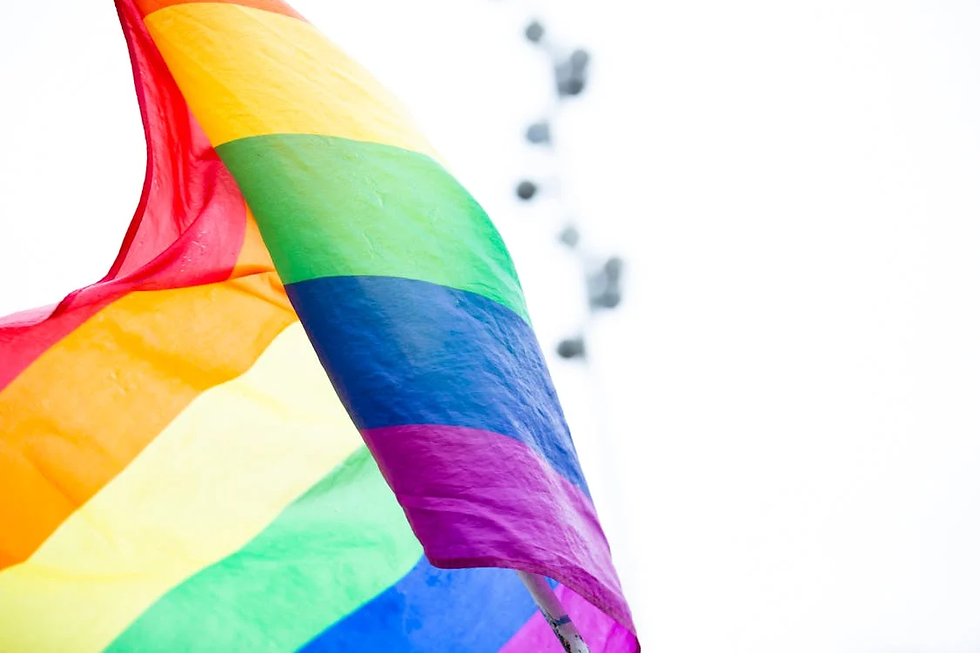Do Not Confine Us to Closets: Why the Importance of Pride Transcends Time
- Maeve Korengold

- Jun 22, 2021
- 5 min read
Updated: Dec 23, 2024
On June 28th, 1970, thousands of people marched from Manhattan to Central Park on Christopher Street Liberation Day: a commemoration of the riots that catalyzed the movement for LGBTQ+ liberation at the Stonewall Inn the year before. Since this point, June has been claimed by the larger LGBTQ+ community as Pride Month. President Bill Clinton officially designated June as Gay and Lesbian Pride Month on June 11th, 1999, and President Barack Obama expanded the month to Lesbian, Gay, Bisexual, and Transgender Pride Month in 2009. Pride Month has continued to be a time for self-reflection, education surrounding LGBTQ+ history, and community organization for further liberation of LGBTQ+ people.

Many LGBTQ+ groups existed before the Stonewall riots of 1969. In 1924, Henry Gerber founded the Society for Human Rights in an effort to combine the community-focused and politically engaged LGBTQ+ activism he observed in Germany during his military service, with the American norms of law and order and the right to pursue happiness. The nonprofit organization, located in Chicago, Illinois, published the first ever recorded gay newsletter,` called Friendship and Freedom. After a year, Gerber and other members of the Society were arrested and attacked by overwhelmingly negative media coverage. In turn, the Society for Human Rights dissolved and Gerber returned to the United States Army. Although he maintained a considerably lower profile after 1925, Gerber continued to build community with LGBTQ+ people and allies and wrote about the struggles that LGBTQ+ Americans faced for the remainder of his life.
In 1955, the Daughters of Bilitis, one of the first recorded lesbian advocacy organizations, was established in San Francisco, California. When it was first established, the group only had eight members, including Phyllis Lyon and Del Martin, who would later be recognized as prominent lesbian rights activists. The association first functioned as a covert place for lesbians to meet and interact with each other at a time in which LGBTQ+ people were at high risk of experiencing discrimination and hostility in public settings. It also provided representation for lesbians, as many felt they were excluded from the LGBTQ+ rights movement, which was largely fronted by gay men. The Daughters of Bilitis transitioned to a political activism organization in 1956 and began to publicize The Ladder, which is recognized as the first long-term American lesbian publication. Members of the organization had differing opinions on the future of their advocacy, including whether to affiliate themselves with male-dominated groups such as the Mattachine Society or to pursue more radical forms of activism. Ultimately, the Daughters of Bilitis began to dissolve during the 1970s.
Although these groups and their activism were short-lived in comparison to others, their existence set the foundation for future developments in LGBTQ+ rights and eased the feelings of isolation that are common among LGBTQ+ people.
Following the events at Stonewall, LGBTQ+ rights groups rose to popularity within LGBTQ+ spaces. The Human Rights Campaign, GLAAD, and PFLAG were all created as a result of the spike in visibility that the Stonewall riots brought to the plight of LGBTQ+ people and the increase in energy given to the already existing efforts for LGBTQ+ rights. Activism became more popular among LGBTQ+ people and allies, but LGBTQ+ people were still ignored by larger American society.
In the 1980s, cases of HIV/AIDS rose at alarming rates, killing millions of people. This crisis was pushed aside at its height because it was first associated with gay and bisexual men. The virus was first labeled as “gay men’s pneumonia,” “gay cancer,” “gay plague,” and most notably, GRID, or “gay-related immune deficiency”.
Furthermore, a 1984 study in the American Journal of Medicine led Americans to believe that an anonymous flight attendant who had hundreds of sexual partners every year was individually and knowingly infecting other men with HIV. All of these pseudonyms for HIV/AIDS contributed to inaccurate beliefs that HIV/AIDS only affected gay men, that gay men were all promiscuous, and that they were all maliciously passing the virus to sexual partners.
In 1972, AIDS became the leading cause of death for men between the ages of twenty-five and forty-four. In 1994, that development expanded to affect all Americans between the ages of twenty-five and forty-four. President Ronald Reagan didn’t say the word “AIDS'' publicly until 1987 when over 2000 Americans were already dead. Death rates continued to climb.
Even after research showed that the virus could not be transmitted through touch, the panic surrounding the virus continued to permeate American society. Doctors refused to treat HIV/AIDS patients. People died all alone in hospital beds because they were rejected by their families and friends for having “the gay disease.” Men who acquired the virus from sexual contact with other men were outed when they began showing symptoms and were forced to go through the difficult coming-out process with little to no support system. The mass hysteria that came from combined societal homophobia, and the emerging consciousness of the epidemic, struck gay and bisexual men, and continues to contribute to the stigma surrounding homosexuality and HIV/AIDS.
Men who participated in same-sex relations were banned from giving blood in 1983 in order to prevent further transmission of HIV/AIDS. This resulted in a shortage of blood, which HIV/AIDS patients so desperately needed due to the frequent blood tests and trials that left many of them severely anemic.
Lesbians volunteered in huge numbers to supply the blood and offer support to isolated HIV/AIDS patients. The San Diego Blood Sisters was a lesbian advocacy group which organized blood drives specifically directed to HIV/AIDS patients. Other lesbian and gay organizations followed suit, religious organizations in particular. Lesbians visited HIV/AIDS patients who were abandoned by their loved ones. The solidarity shown during this time despite the rift between gay-led and lesbian-led groups is a testament to how the LGBTQ+ community has the ability to unite when it matters.
Gay and bisexual men who have been sexually active within the past three months are still barred from donating blood in the USA. HIV/AIDS is still a major crisis in BAME communities. The medical protection of transgender individuals are under attack, and more Black transgender women are being murdered every year. Anxiety, depression, and suicide among LGBTQ+ youth are extremely high. Homosexuality is still punishable by jail time in 70 countries. It is punishable by death in 13. The huge discrimination that continues to overpower our human rights is why Pride continues to be necessary.
All of the rich history that supplements Pride - the first LGBTQ+ advocacy groups started by courageous pioneers, the riots at the Stonewall Inn led by fearless women of color, trials brought on by the ignorance towards the HIV/AIDS epidemic, and much, much, more - matters, and will continue to be relevant as global communities progress further into the bounds of true equality.

_edited.png)

Comments